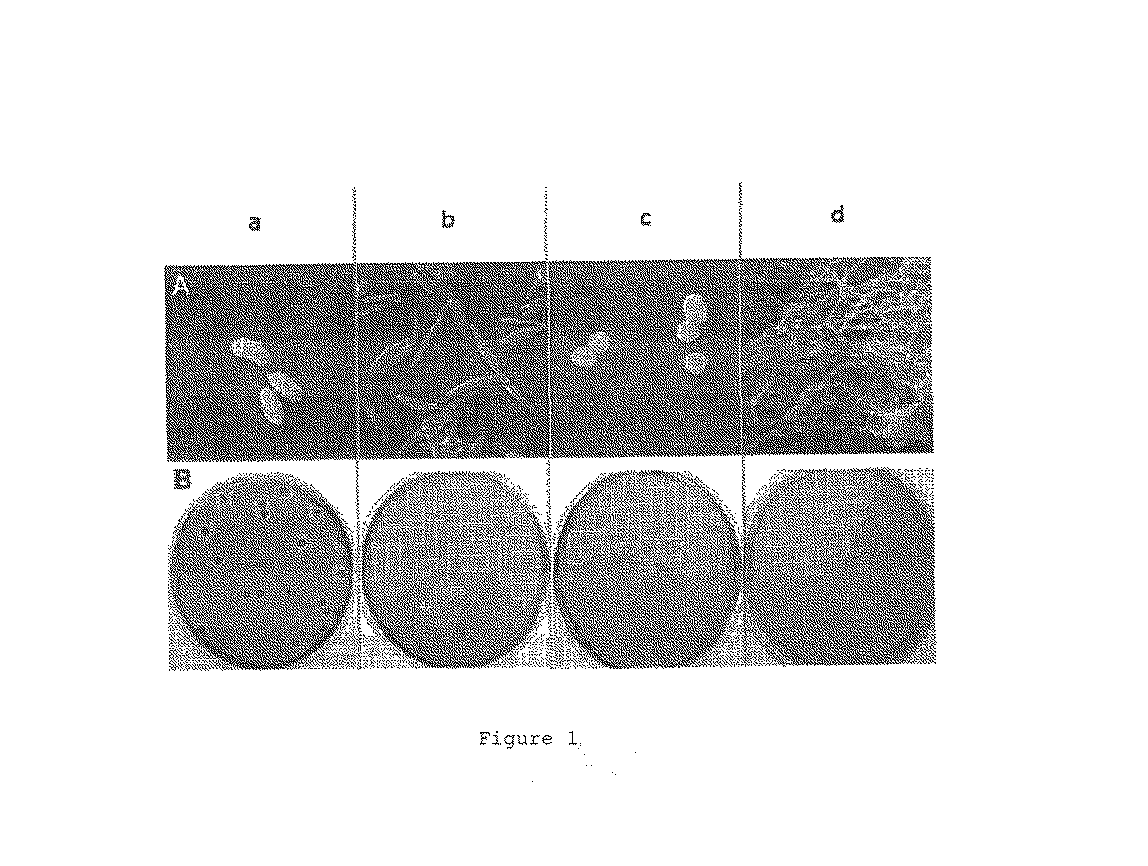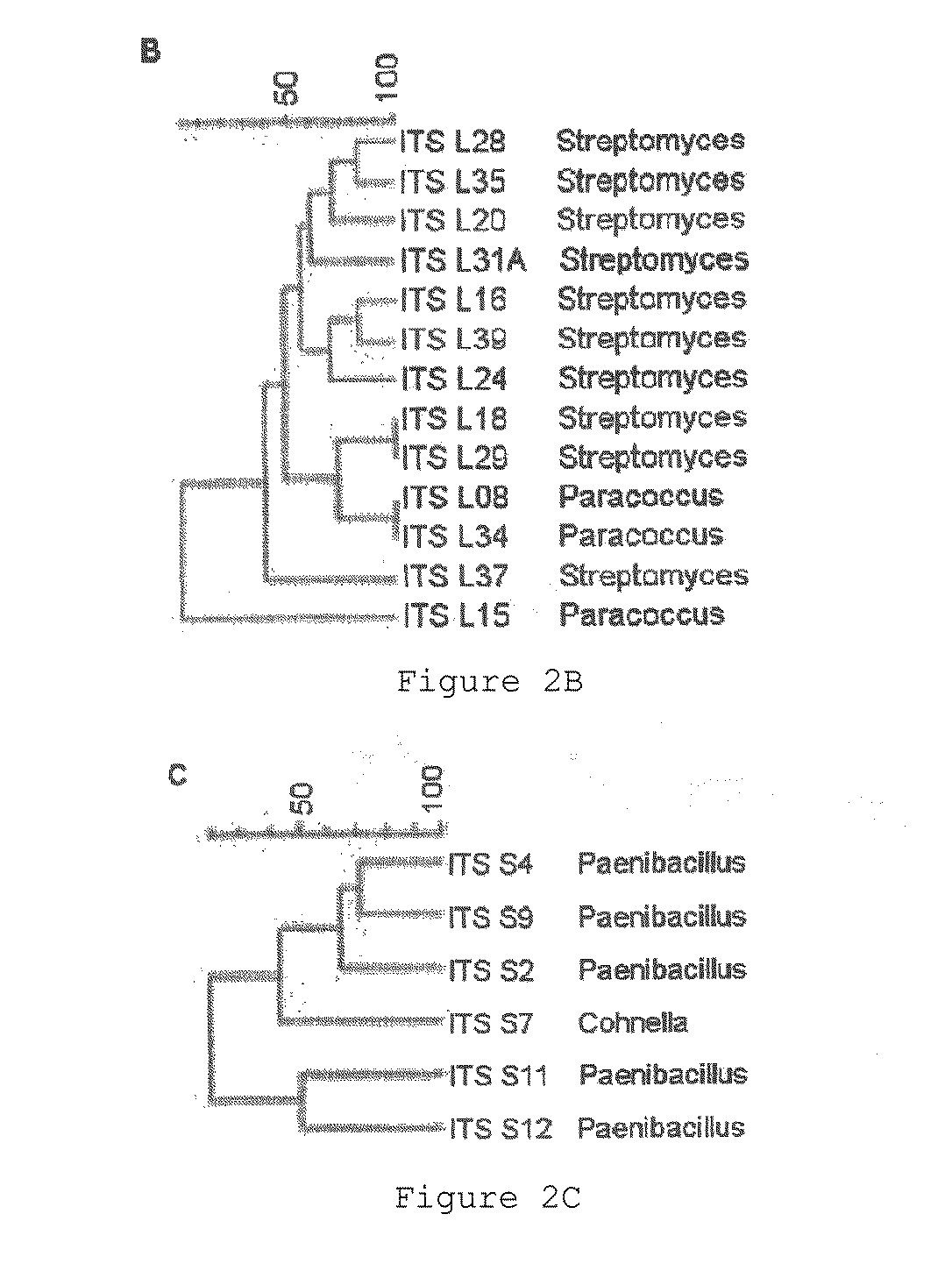Reduction of non-starch polysaccharides and alpha-galactosides in soy flour by means of solid-state fermentation using cellulolytic bacteria isolated from different environments
a cellulolytic bacteria and solid-state fermentation technology, applied in the field of animal feed industry, can solve the problems of not revealing a way to do fermentation, production trials, similar cost of fish consumables, etc., and achieve the effect of reducing costs, reducing nsps, and reducing subsequent drying costs
- Summary
- Abstract
- Description
- Claims
- Application Information
AI Technical Summary
Benefits of technology
Problems solved by technology
Method used
Image
Examples
application examples
Example 1
Isolation of Bacteria
[0055]The first step of this development was the isolation of bacteria from different environments and their further molecular characterization.
[0056]The following environments were chosen: garden soil, earthworms (Eisenia foetida), corn silo, termites (Neotermes chilensis), decomposition leaves and bovine rumen contents.
[0057]The samples taken from those environments were immediately processed after their collection. The samples were crushed, weighed and homogenized in sterile PBS buffer. Then they were seeded in minimum solid medium of carboximetilcellulose containing: carboximetilcellulose 5 g (Merck), NH4Cl 6 g, Na2HPO4 0.6 g, BactoAgar 15 g, Amphotericin B 10 mg and traces of essential elements of Hendriks (Hendricks, C. W.; Doyle, J. D. Hugley, B. 1995, A New Solid Medium for Enumerating Cellulose-Utilizing Bacteria in Soil, Applied and Environmental Microbiology, 61, 2016-2019) and 1 L water. The incubation was done for 5 days at 25° C. A total 2...
example 2
Fermentations in Solid State at Laboratory Scale
[0066]With the selected bacteria fermentation in solid state experiments were developed at laboratory scale to assess the degradation of the ANFs proposed, plus some factorial designs to optimize initially the process. The conditions found were validated with an experiment at laboratory scale with 5 copies where the contents of alpha-galactosides and NSPs were compared in two groups: one group with inoculum of selected bacteria (1×109 cells per gram of substrate per each selected strain) and another group without inoculum in similar conditions and parameters.
[0067]The ferments conditions were as follows: in glass bottles with filtered aeration 30 g of soybean meal were added (with particle size of 400 μm and sterilized by gamma radiation with 25 kilo gray) and fermentation solution at a ratio of water to substrate of 2.4:1 (v / w) with a relative humidity near 85%. This was considered the substrate. The culture solution contained phospha...
example 3
Fermentations in Solid State at Larger Scale
[0070]Once obtained the objective at laboratory scale level, a fermentation chamber at larger scale was developed using the parameters previously established.
[0071]The fermentation solution was prepared according to Table 1.
TABLE 1Fermentation solution for 10 kilos of soybeanmeal / water with 7 liters of waterQty for 10 kilos soybeanmeal / water, withCompound7 liters of waterMgSO45gCaCl1.22gNH4Cl13.6gKCl2.233gPentahydrated FeSO410mgTetrahydrated MnCl10mgPentahydrated ZnSO410mgH3PO41.2mlNa2HPO421.13g
[0072]The results for the reduction of the nutritional factors of this fermentation are shown in Table 2 and Table 3.
TABLE 2Proximal chemical analysis of the soybean meal withoutfermentation and of the fermented soybean mealNon-fermentedFermentedUnitSoybean mealSoybean mealTotal protein%46.83 ± 0.1354.23 ± 0.14Ethereal extract% 7.77 ± 0.06 7.29 ± 0.06Non-%26.56 ± 0.0418.68 ± 0.26nitrogenatedextractEnergyKcal / 100 g363.67 ± 0.58 357.00 ± 0.00
TABLE 3R...
PUM
 Login to View More
Login to View More Abstract
Description
Claims
Application Information
 Login to View More
Login to View More - R&D
- Intellectual Property
- Life Sciences
- Materials
- Tech Scout
- Unparalleled Data Quality
- Higher Quality Content
- 60% Fewer Hallucinations
Browse by: Latest US Patents, China's latest patents, Technical Efficacy Thesaurus, Application Domain, Technology Topic, Popular Technical Reports.
© 2025 PatSnap. All rights reserved.Legal|Privacy policy|Modern Slavery Act Transparency Statement|Sitemap|About US| Contact US: help@patsnap.com



